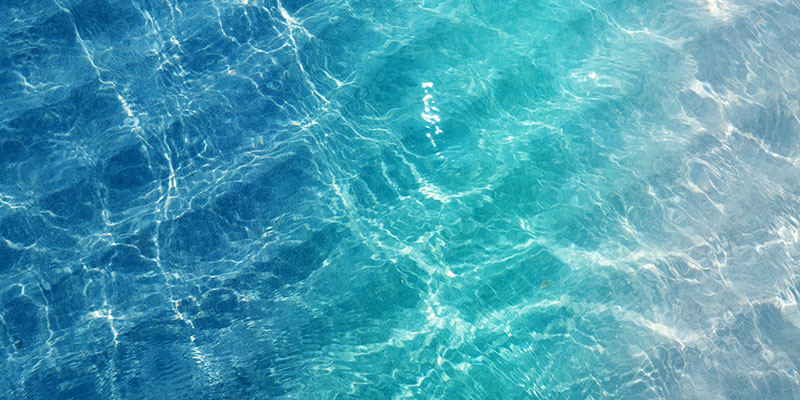As water scarcity increases and we look to unconventional sources of fresh water, advancing technology is making desalination of seawater an ever-more viable possibility.
Experts have identified a range of unconventional water sources that can provide potable water to water-stressed regions
Tapping into a range of abundant unconventional water sources can help the world meet its growing need for fresh water, United Nations experts state in a newly published book, Unconventional Water Resources.
Manzoor Qadir, deputy director of United Nations University Institute for Water, Environment and Health (UNU-INWEH), and lead editor of the book, said:
Harnessing the potential of unconventional water sources could benefit billions of people. These sources will be essential to building a future in arid areas.
The book highlights six general categories of unconventional water sources that can be tapped, as outlined below:
1.) Harvesting Water From the Atmosphere
Water that evaporates from the surface of the Earth doesn’t simply disappear, but rather, it forms water vapor in the atmosphere. It’s estimated that the atmosphere contains about 13,000 km3 of water vapor, or nearly three times more than global freshwater demand of 4,600 km3. The moisture can be harvested through cloud seeding to enhance rainfall, or it can be captured very economically by installing vertical mesh nets to collect potable water from mist and fog.
2.) Microcatchment Rainwater Harvesting
In arid regions, more than 90% of rainwater that falls to Earth either evaporates or runs off the land before it has a chance to percolate into soil. Microscale capture of rainwater can prevent this water from being lost by channeling it to irrigate crops or to water storage systems for later use. Methods of water capture include rainwater harvesting from rooftops, and use of contour ridges and swales in landscaping.
3.) Desalination
Desalination is already providing more than 100 million m3/d of potable drinking water to meet the needs of roughly 5% of the world’s population. This volume is expected to double in the upcoming years. While expense has historically prevented widespread adoption of desalination, costs are expected to be halved as new desalination technologies emerge, making it a more cost-efficient and viable alternative to conventional water supplies. Fluence NIROBOX™ and NIROFLEX solutions use state-of-the-art technologies — including energy-recovery devices, high-efficiency positive displacement pumps, and variable-frequency drives — to make seawater and brackish-water desalination more affordable. And, Fluence uses brine-reduction solutions to minimize discharge costs and environmental impact.
4.) Groundwater Onshore and Offshore
Huge volumes of water are stored underground on land and offshore. While deep inland aquifers and groundwater located under the seabed close to the shoreline tend to be brackish, salty water can be treated with reverse-osmosis desalination technology to deliver a reliable source of drinking water or irrigation water. New electromagnetic technology now makes it possible to conduct offshore surveys or explore for abundant supplies of water deep underground. To reduce costs, decentralized packaged desalination plants, such as Fluence’s NIROBOX™, can be located close to the source.
5.) Water Reuse
Arguably one of the most feasible and sustainable sources of unconventional water is water reuse. Municipal wastewater, agricultural drainage water, and even industrial wastewater can be recycled. Water reuse is an excellent tool to improve both water and food security. Advanced wastewater treatment technologies, such as Fluence’s modular Aspiral™ plants, use membrane aerated biofilm reactor (MABR) technology to produce water of high quality for reuse. Recycled water can be used directly, for example, to irrigate crops or landscapes, or indirectly to recharge aquifers that serve as a source of drinking water.
6.) Moving Water to Water-Scarce Regions
The book suggests physically transporting water to water-scarce areas in ship’s ballast holds or by towing icebergs. Under the International Convention on the Control and Management of Ships’ Ballast Water and Sediments, ships with a gross tonnage of 400 or greater are required to have a method of desalinating and treating ballast water for invasive species and harmful chemical compounds onboard, making it suitable for reuse as irrigation water.
New Era of Water Management
Sasha Koo-Oshima, deputy director of UN FAO and co-editor of the book, said:
The increasing pressures on water resources requires a new era of water management, one that addresses barriers to efficient water management and ensures that water in all its forms is monitored and accounted for, including its value to food, ecosystems and health, and its role in supporting food security and basic needs of humanity and economic development.
Fluence can help your organization enter this new era of water management, with a wide range of solutions from large plants to modular plants for decentralized treatment. Contact our water experts to learn more.

